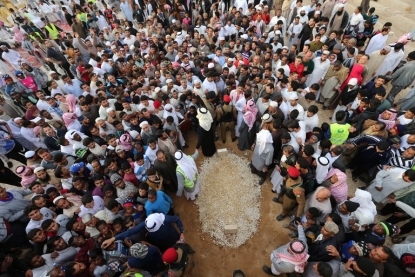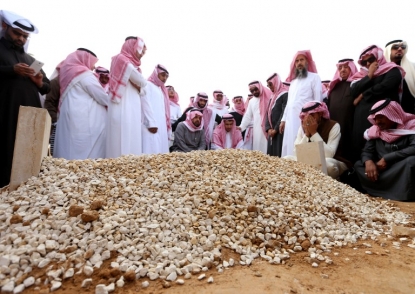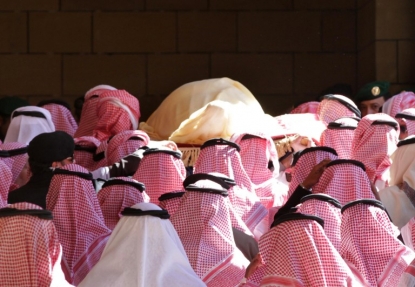Nameless grave for a billionaire king
(AFP Photo / Mohammed Mashhur)
RIYADH, January 28, 2015 – The austere funeral of Saudi King Abdullah intrigued many a foreign observer. Strange and surprising to see one of the world’s richest monarchs, with a fortune once estimated at more than 21 billion dollars, laid to rest in a nameless grave.
After hours spent waiting outside the cemetery the day of the funeral, on January 23, the police finally allowed me inside. I managed to clamber up on a wall, and that is how I took this picture of mourners gathered around the king’s grave. I was not the only photographer there, but no one else thought to shoot their photos from above, choosing to stay at ground level.
 Mourners at the grave of King Abdullah on January 23, 2015 (AFP Photo / Mohammed Mashhur)
Mourners at the grave of King Abdullah on January 23, 2015 (AFP Photo / Mohammed Mashhur)I wanted to take this picture for the sake of history, to show the world how we bury a king here in Saudi Arabia, without particular distinction, in the midst of people both rich and poor. While I was taking my pictures I could hear people praying for the deceased, who as king was the guardian of Islam’s holiest sites, and imploring Allah to have mercy on him. The atmosphere was pious, and sad.
The extreme simplicity of the funeral is the norm in the kingdom, for sovereigns and commoners alike. The body of the deceased, wrapped in a plain shroud, is carried on a simple litter by his loved ones, and after prayers, buried in an unmarked grave, turned towards Mecca and marked only by a book-sized plain grey stone.
 Mourners at the grave of King Abdullah on January 23, 2015 (AFP Photo / Mohammed Mashhur)
Mourners at the grave of King Abdullah on January 23, 2015 (AFP Photo / Mohammed Mashhur)The custom stems from Wahhabism, the austere brand of Islam followed in the Islamic kingdom, preached in the 18th-century by Mohammed bin Abdul Wahhab, a jurist of the Hanbali school, the most conservative of the four main Sunni Muslim schools of jurisprudence.
According to the school, funeral rites must be kept as simple as possible, and mourning itself - while expressions of emotion are allowed - must be discreet.
Mohammed Mashhur is an AFP contributor in Saudi Arabia

The body of King Abdullah is carried during his funeral at Imam Turki Bin Abdullah Grand Mosque on January 23, 2015 in Riyadh
(AFP Photo)


